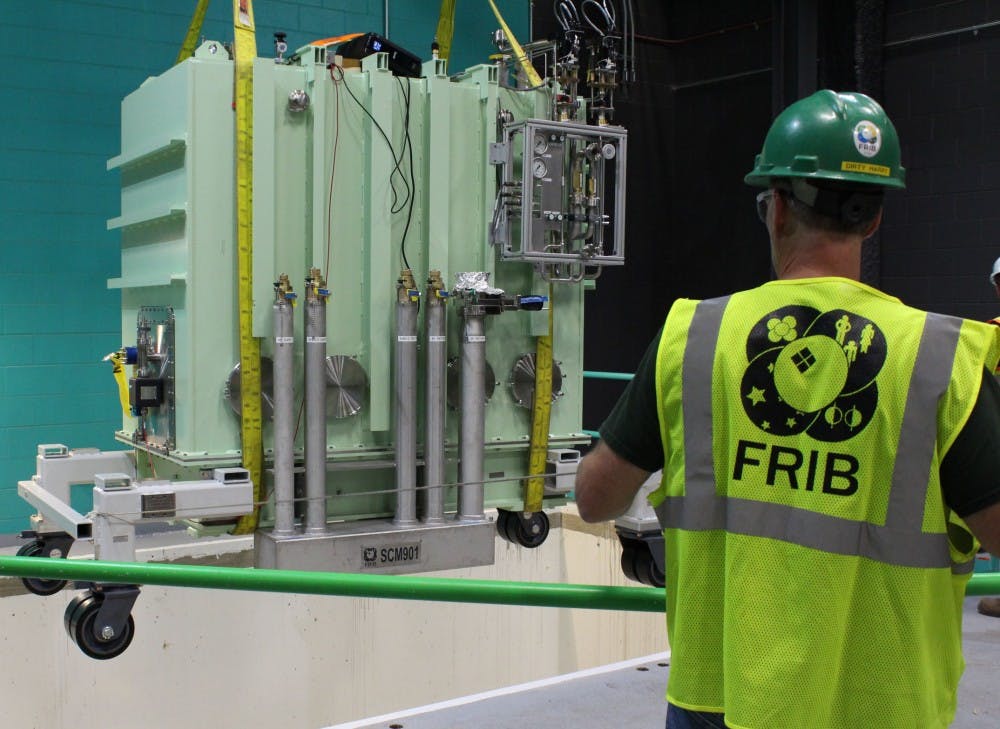MSU professor Danny Schnell loves plants so much, the Department of Energy gave him $10 million.
Okay, so it's not that simple. The MSU Plant Biology department recently received the $10 million grant to fund research into the fuel applications of camelina seed oil, extracted from a plant that needs less water and fertilizer to grow than other common "biofuel" sources, like soybeans and sunflowers. Schnell said because the price of petroleum "has fallen considerably" since the rise and fall of E85 ethanol about a decade ago, there is a renewed interest in biofuels that led to the Department of Energy to fund MSU's efforts to more efficiently produce seed oil.
"What this will allow us to do is bring together this large, collaborative group that will then provide a mechanism for us to look at the plant as a whole system," Schnell said. "We anticipate that this will have major implications for many crop plants."
A little over a decade ago, this would have accounted for nearly all of the grant money the Department of Energy awarded to MSU. During the 2006-07 school year, the agency sent a grand total of $11.25 million to various projects at MSU, according to the 2017 Data Digest. However, in large part due to the Facility for Rare Isotope Beams, better known as the FRIB, that number skyrocketed to $131.53 million during 2015-16.
The FRIB is a one-of-a-kind project that significantly inflates the funding total. The project's total price tag approaches three-quarters of a billion dollars and is currently projected to receive about $100 million per year in Department of Energy funding.
The Department of Energy's money doesn't just go to constructing this super-lab; it has a huge impact on Spartans' studies and lives as well.
Juan Manfredi is a doctoral candidate who works at MSU's National Superconducting Cyclotron Laboratory, the building that the FRIB will eventually take the place of. His studies in nuclear physics have had a constant tie to federal funding; for four years, he was funded by a Department of Energy fellowship that included a living stipend and work in a DOE laboratory. Manfredi does not think this experience as a grad student relying on federal money is unique.
"I, throughout all of my time in graduate school, have been funded by federal funding," Manfredi said. "It's really been necessary for me to do anything that I've done."
Leo Kempel, dean of the College of Engineering, said despite the FRIB being extremely lucrative for MSU, the Department of Energy's financial input to the university is neither a fluke nor a recent development. Kempel said the funding is a culmination of years of successful efforts to build a campus that has the resources and faculty to complete the research that the agency needs.
"Years ago, the administration at MSU made the decision to become extremely strong in this field, quite frankly, to be the best," Kempel said. "Investments have been made since (current students) were really young to build that team. You don't get these teams that are world-class in two or five years. It takes decades to grow."
What sets the Department of Energy increase apart is that, at the same time, nearly every other federal agency has significantly decreased their award payouts to the university. Although federal money still accounts for 66 percent of MSU's external funding, the Agency for International Development has slashed funding by 64 percent during this time, while NASA's 2015-16 payouts were less than half of what they were in 2006-07.
In fact, only one agency in the Data Digest outside of the "Other Agencies" category, the National Science Foundation, is paying more now than they were then. Yet even in the case of the NSF, the $150,000 increase barely registers, amounting to a 0.3 percent uptick from $62.4 million to $62.5 million.
Although ecology researcher Kateri Salk has yet to personally see the impact of federal cutbacks on her studies, she acknowledges that the potential of decreased funding remains constantly on her mind. Salk, who recently graduated from MSU with a doctorate in integrative biology and has since become a fellow at the University of Waterloo, has received grants from the NSF to fund her work relating to water quality. She said those grants have been integral to both her career and continued developments in her field.
"So many of those studies depend on federal funding," Salk said. "Thinking how you can strategize and think about what projects you can actually accomplish with this shrinking federal budget ... is definitely at the forefront of my brain."
As federal agencies have pulled back, some worry that fewer graduate students will have the funding sources that have benefited Salk and Manfredi. Thomas Jeitschko, who just recently was named dean of the Graduate School, says this issue is not MSU's alone. Schools nationwide have had to adjust their research efforts to deal with recession-era cutbacks. This problem that sometimes leads to six-year grad students only receiving three-year federal grants, leaving universities to cover the gaps or simply accept fewer students into their labs.
"It has become a lot tougher, so there's no question about that," Jeitschko said. "We're scrambling, we're working hard, we're trying to supplement and write good grants and see what we can get. A lot of people aren't aware of the importance of what graduate students really contribute to the university. ... Graduate training is so essential to our core mission."
Support student media!
Please consider donating to The State News and help fund the future of journalism.
Discussion
Share and discuss “FRIB brings more funding to MSU” on social media.





